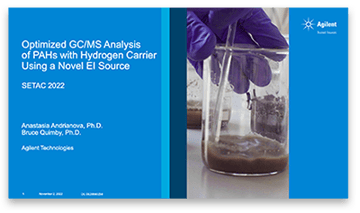
Separation Science, in collaboration with
Agilent, offers a video application, complementary application note and related assets focused on GC/MS in selected ion monitoring (SIM) mode using hydrogen as the GC carrier gas.
Format: Video Application
Duration: 13 minutes
Presenter: Anastasia Andrianova
Anastasia Andrianova
GC/MS Applications Scientist,
Agilent Technologies
Dr. Anastasia Andrianova is a GC/MS Applications Scientist in the Mass Spectrometry Division of Agilent Technologies, located in Wilmington, Delaware. She is currently working in GC/MS applications in multiple areas including environmental and food safety.
Sponsor:


